NORTH WALES COAST RAILWAY:NOTICE BOARD
Rheilffordd arfordir gogledd Cymru: Hysbysfwrdd
05 April 2021





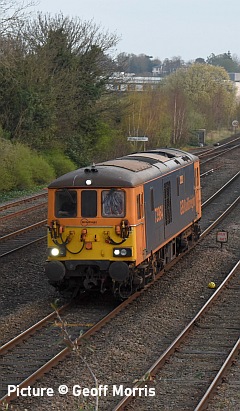
Forthcoming events
(see also our Calendar page for venues)
Note: we have removed all entries relating to meetings as the events are cancelled.
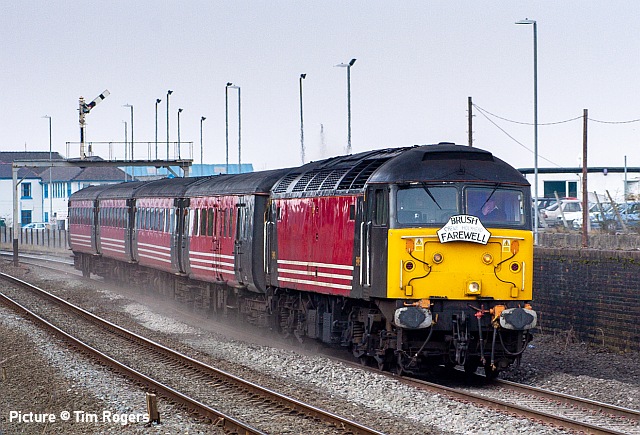
Seventeen years ago, On 30 March 2004, 47 750 passes Mostyn with 1K67 12:48 Holyhead to Crewe Arriva Trains Wales service. The 'Brush Farewell - Holyhead - Crewe' headboard was made by local rail staff; the following day was to be the last day of these loco-hauled services, and they did end, only to make a re-appearance later. Our 29 November 2016 issue relates the history of these trains. Picture by Tim Rogers.
News pictures
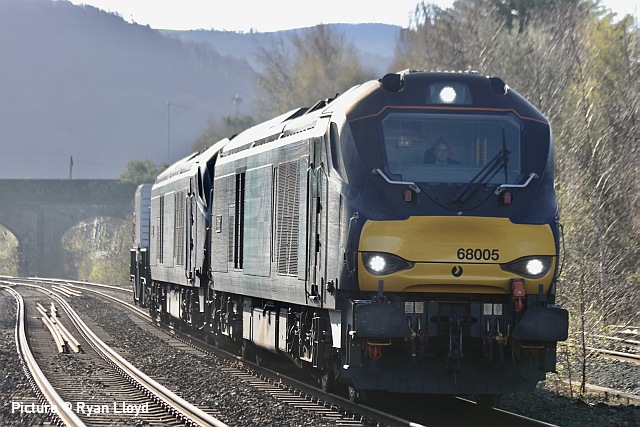
A surprise event on Friday 2 April was the appearance on the Coast line of a DRS nuclear flask train; once a regular sight, before the closure and de-fuelleing of Wylfa power station.
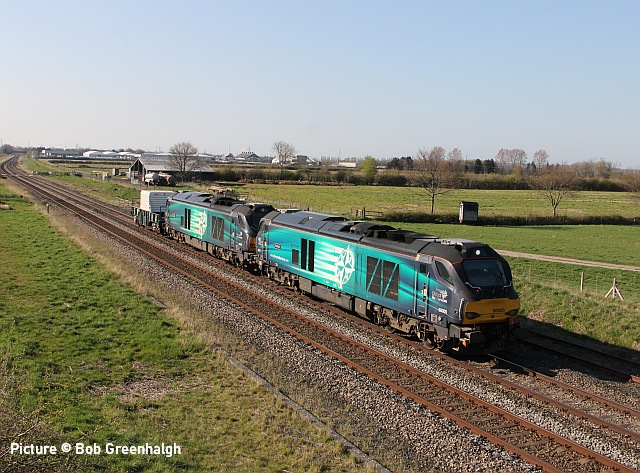
DRS policy is to run an occasional train to retain experience of the line and equipment. 68 005 Defiant and 68 002 Intrepid did the honours. Picture by Bob Greenhalgh.
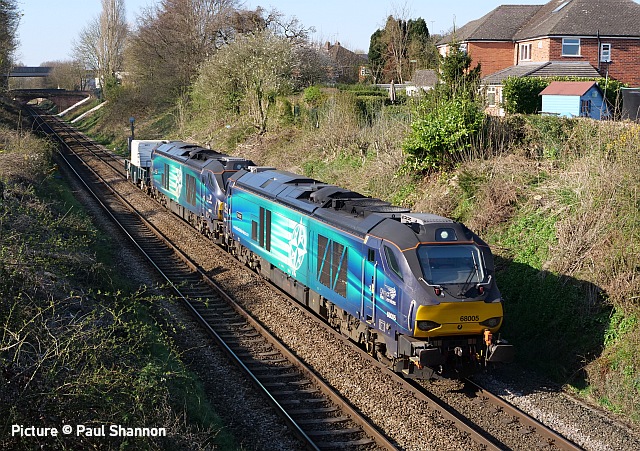
Passing Christleton on the Chester - Crewe section, a view possible after recent vegetation clearance (Paul Shannon). Previous runs recorded were on 3 June 2020 (which also served to test an overhauled Class 37) and 13 August 2020. The final loaded train ran on 19 August 2019.
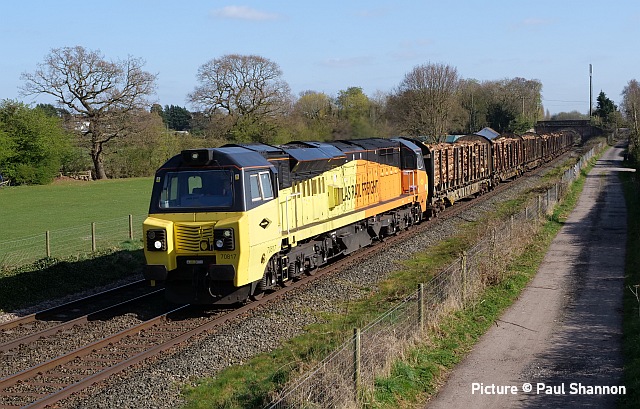
The changing of the clocks and an fairly rare working facilitated photographs of the Colas log train; here's Colas 70 817 passing Rowton on Saturday 3 April.
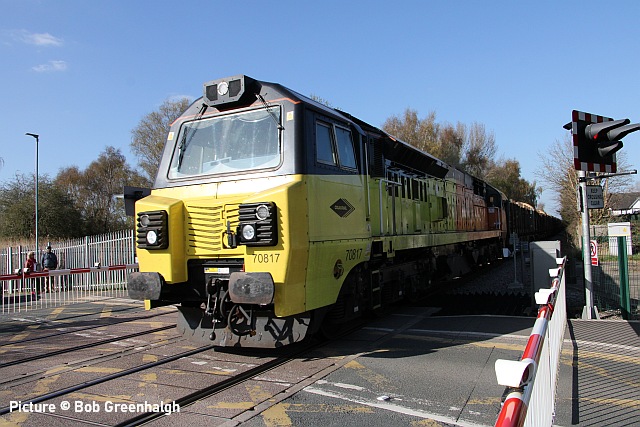
This particular train (pictured at Green lane Crissing by Bob Greenhalgh) was from Baglan Bay loading point in South Wales; unloaded overnight, the empty train proceded to on Sunday morning to the other loading point in Carlisle. Loaded there, it returned to Chirk on 5 April, but arrival waswell after dark.
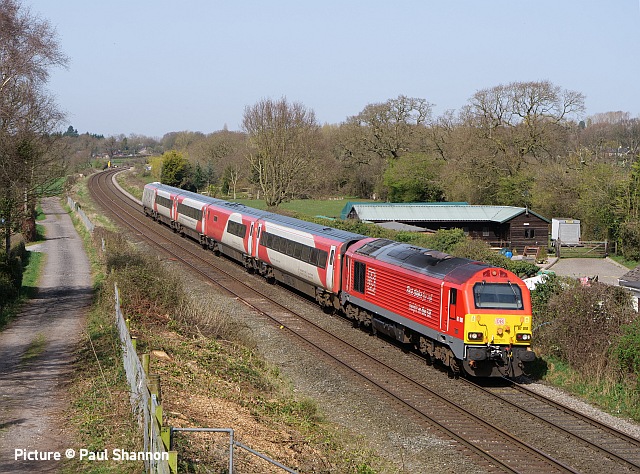
The Holyhead -Crewe trainer continues to run every now and then; a run with 67 010 was made on Sunny 29 March, captured by Paul Shannon at Rowton (above) ...
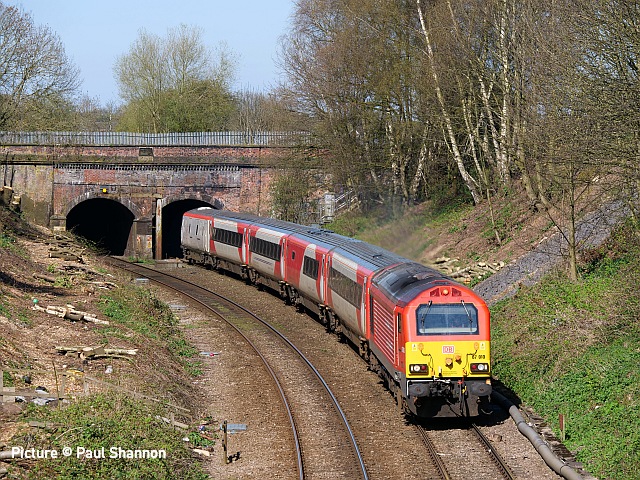 ...
...... and again on 2 April, seen emerging from Christleton Tunnel, an usuual structure which passes under the Shropshire Union Canal, and in the past was regularly flooded, but in recent years Network Rail have made drainage improvements.
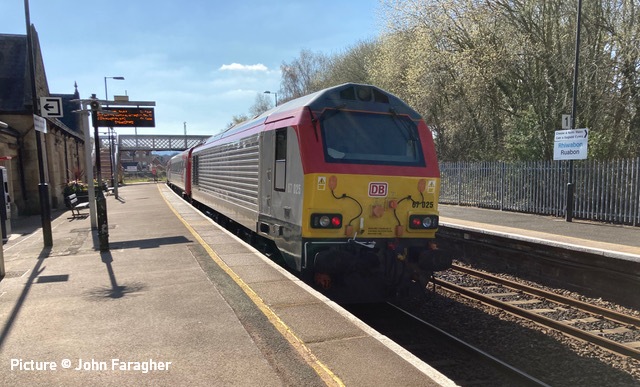
Another TfW loco-hauled set, with 67 025, was out on the rails on 2 April: working empty stock from Wrexham to Cardiff. It paused for a while at Ruabon, where John Faragher was in attendance with his camera ...
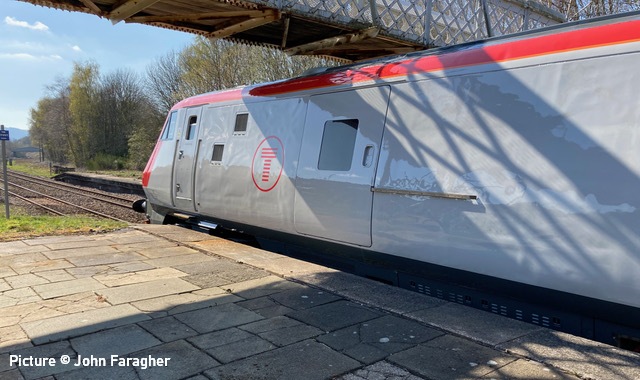
Driving Van Trailer 82226 leading.
TfW intend to decorate these vehicles with vinyls supporting charities. In February it was reported that two of the three charities, with Alzheimer’s Society Cymru and Ty Gobaith Children’s Hospice, were chosen in a poll of TfW staff. For the third, a poll was run on Twitter to choose between Mind Cymru, the Royal National Lifeboat Institution (RNLI), and Wales Air Ambulance. 3,625 people voted and the RNLI won. We await the resulting liveries with interest.
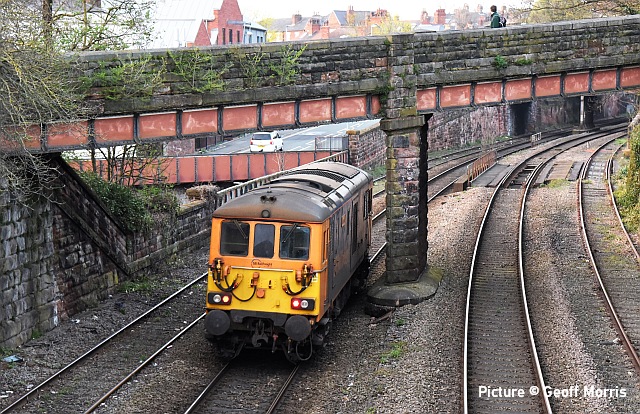
An unusual visitor to Chester on 1 April was GBRf electro-diesel 73 964 Jeanette. Geoff Morris writes: 'Around 19:00 I was looking at my Facebook account and saw a post from a group based in South Wales that mentioned that 73 964 was en route (light engine) from Westbury to Chester via the Marches Line (headcode 0Z23). It was due in Chester just after 19:30 so I just had time to grab my camera and walk to the City Walls to await its arrival.'
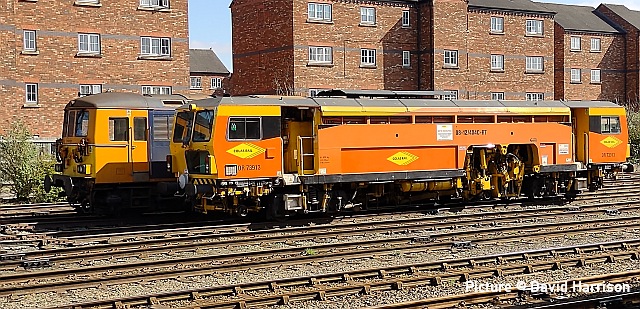
Lurking behind tamper DR 73913 on 2 April (David Harrison).
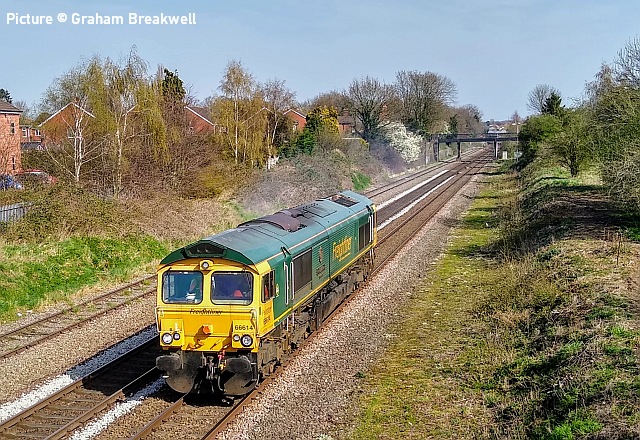
Shrewsbury – Craven Arms route learners have continued all week, making 5 or 6 trips before returning to Crewe. Above, on 31 March 66 614 Poppy, is seen at Kemps Eye, Shrewsbury.
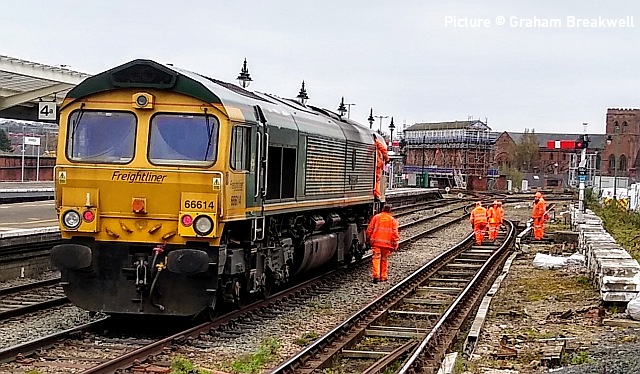
1 April, and 66 614 again, the crew changing ends on the down main in Shrewsbury station - whilst the orange army replace the track into platform 3 next to it’s mini signal - with Severn Bridge signal box in the background covered in scaffolding.
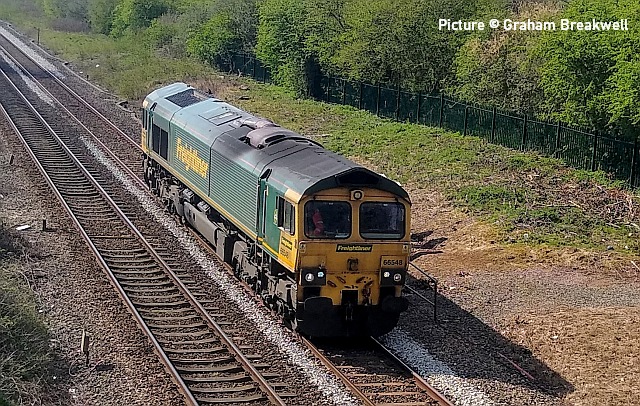
On Friday 2 April 66 548 completes the week,seen at Oteley Road bridge, Shrewsbury.
Over the weekend major work took place overnight Saturday and Sunday between Dorrington and Marshbrook with three engineering trains, worked by three 66’s and a 56, including the High Output Ballast Cleaning System, impressively banked up to Dorrington by Colas Rail 66 415.
Looking back: Rhyl Miniature Railway loco history - by David Pool
The Rhyl Miniature Railway played a key part in the development of 15 inch gauge railways. This is my attempt to set out its history and to clarify what has been a very complex story of the locomotives involved.
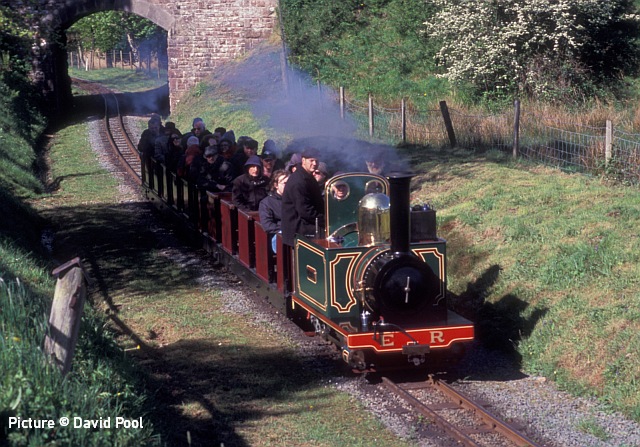
The distinction between model railways and miniature railways is basically that miniature railways can carry passengers and goods. The term “Minimum Gauge” was suggested to be 15 inches, on which a train could convey passengers seated within coaches. One of the early pioneers was Sir Arthur Heywood, who had built a 15 inch gauge railway on his estate in Derbyshire around 1880, operated by a steam locomotive he had built. Heywood was then commissioned to build a railway in Cheshire for the Duke of Westminster, running from Balderton station on the GWR to Eaton Hall. The motive power was to be Katie, built in Heywood’s Works. This successful locomotive has survived, and was a visitor to the Ravenglass and Eskdale Railway on 4 May 2019, where it was photographed at Muncaster Mill (above).
The next character to appear in the story is Henry Greenly, born in Birkenhead in 1876 to a family with strong railway connections. As a young man, he rapidly became recognised as a talented engineer, designer and author, with a particular interest in railway models. Around 1900 he met Wenman Joseph Bassett-Lowke, who had a thriving business in model railway locomotive construction, and joined forces with him as a consultant. A company registered as Miniature Railways of Great Britain Ltd was planning to open a railway at Blackpool, with Greenly and Bassett–Lowke agreeing to provide a 15 inch gauge steam locomotive.
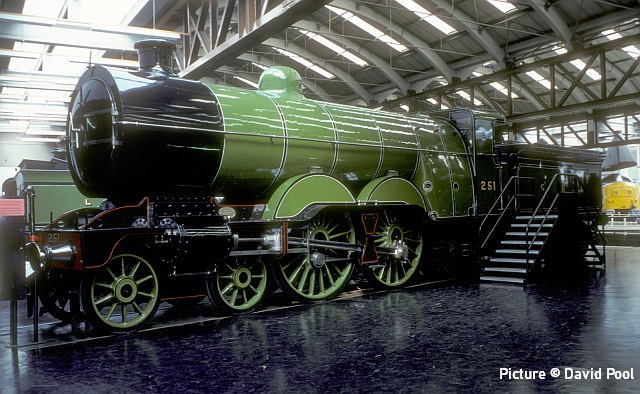
By 1905, Little Giant had been built, a 4-4-2 “Atlantic”, designed by Greenly and inspired by Ivatt’s Class C2 Atlantics on the Great Northern Railway. The preserved GNR No.251 was on display in York Railway Museum on 31 March 1984.
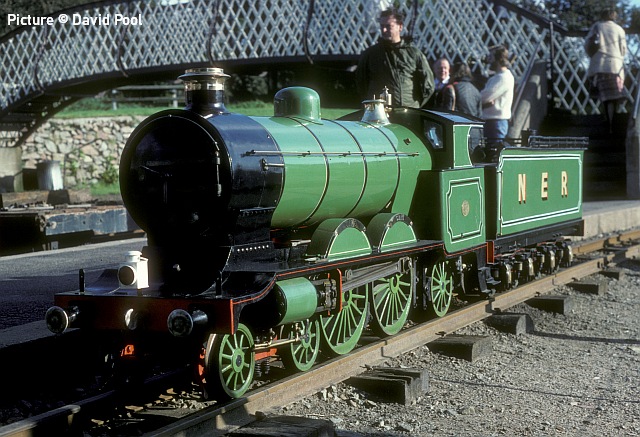
No.10 Little Giant was tested on the Eaton Hall Railway, where it performed well, and went on to Blackpool. After working on many other railways, it was recognised as historically important, and acquired by York Railway Museum. On 25 September 1981 it was visiting the Ravenglass and Eskdale Railway for a Gala. It is reported as having returned there recently for further restoration.
Little Giant became the prototype for nine more locomotives from Bassett-Lowke, all built to the same high standards, several being run or exhibited in Europe. Miniature railways were also becoming popular in the USA, being found mostly in Amusement Parks. The firm of Cagney Brothers (New York) was founded in 1894, and became very successful, supplying locomotives for any gauge between 9 and 22 inches! Based on the famous No.999 of the New York Central Railroad, which had reputedly attained 112 mph in 1893, their locomotives were designed to be hard wearing and easy to maintain. It would be fair to say that their build quality did not match that of Bassett-Lowke’s products.
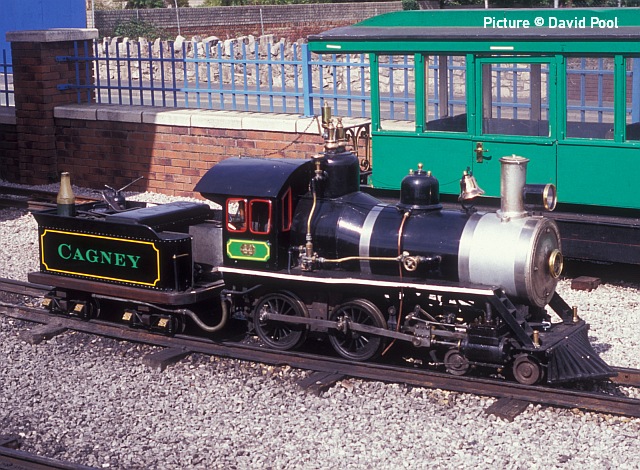
A Cagney locomotive may be seen at Rhyl, where No.44 (built in 1910) was photographed on 20 August 2011.
After the success of the Blackpool enterprise, Miniature Railways Ltd approached Rhyl Council with a proposal to build a miniature railway at the newly opened Marine Lake and Amusement Park. Greenly was invited to survey the site and design the railway, the steam locomotives to be supplied by Bassett-Lowke. On 1 May 1911 the line was opened, using No.15 Red Dragon, which had been built for the 1909 Franco-British Exhibition at Earl’s Court, but renamed Prince Edward of Wales on arrival at Rhyl. It later moved to Margate in 1920 and after running there for many years, it was eventually withdrawn and left for scrap.
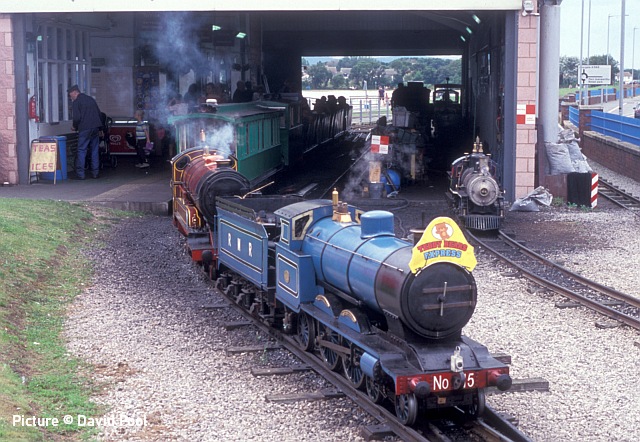
Restoration using what parts remained was completed in 1991, and No.15 returned to Rhyl, where it was photographed on 3 August 2019. The Cagney on the right of the image is notably smaller!
It should be noted that Bassett-Lowke frequently took back locomotives for rebuilding prior to sending them to a new railway, and this usually resulted in a name change. Their records were a contrast to their engineering excellence, and it has always been difficult to confirm when a particular locomotive has been built or rebuilt. The same names were often carried by different locomotives at different times, all of which adds to the confusion. The locomotive number is probably the best way to identify a particular locomotive.
A second Class 10 locomotive No. 18 George the Fifth went to Rhyl in 1913, after which Greenly designed the Class 20 locomotives, which were more powerful, having larger boilers and cylinders.
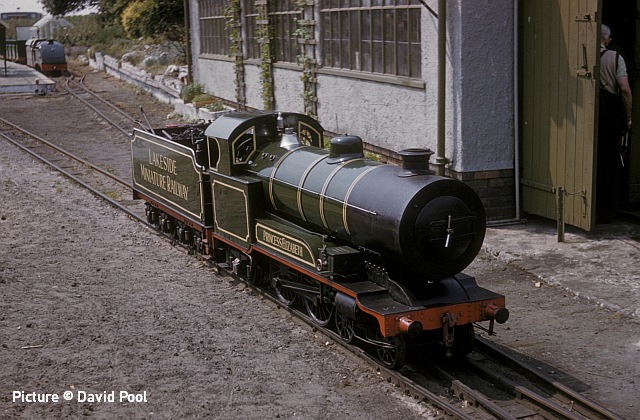
An example of this improved design is No.22, now Princess Elizabeth, which was working on the Lakeside Miniature Railway, Southport, on 5 June 1960. It was eventually bought by Francis Ford Coppola, the Film Director, to join No. 18 on his railway in the USA.
The final Greenly Atlantics were the Class 30, which were larger again, being scaled at 3.25 inches per foot in comparison with the 3 inches per foot of the earlier locomotives.
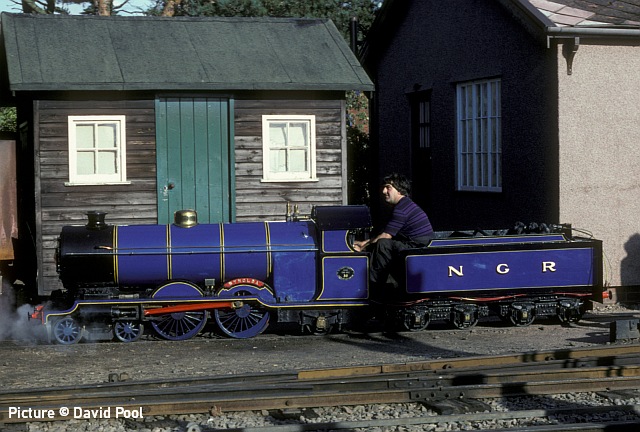
Two examples exist, a Ravenglass resident No.30 Synolda ...
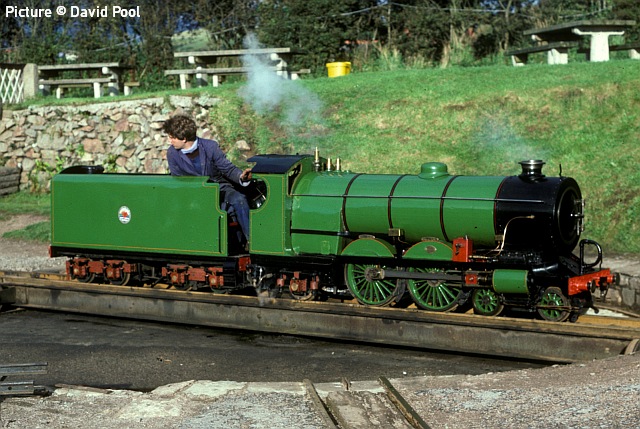
... and No.32 Count Louis., the latter having been at Fairbourne until the line
was regauged. Both appeared at the R&ER Gala on 25 September 1981.
The locomotives at Rhyl in the Barnes era from 1920 onwards will be covered in a further article.
Cambrian Corner
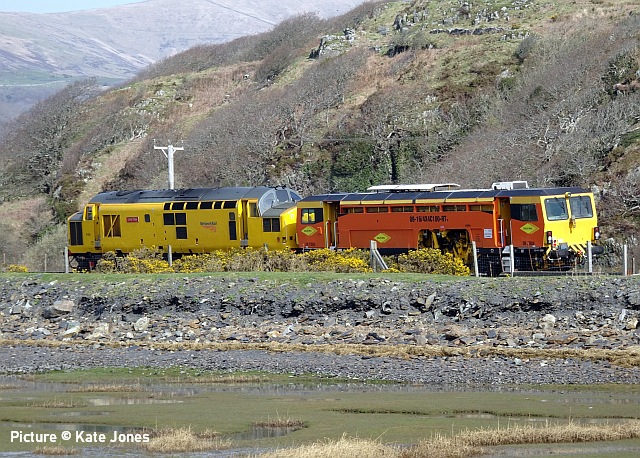
Something slightly unusual on the Cambrian Coast line on 30 March when 97304 John Tiley visited Porthmadog with a Colas Rail tamper. The train was a Tywyn-Porthmadog working, timed during daylight hours - which was a great bonus, as almost all Network Rail trains on the Cambrian Coast are night-time workings. Above, the ensemble approaching Barmouth (Kate Jones)
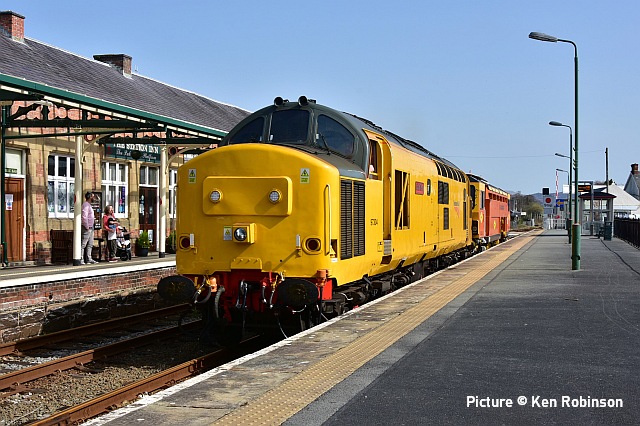
Arrriving at Porthmadog 9 mins. early on the afternoon.
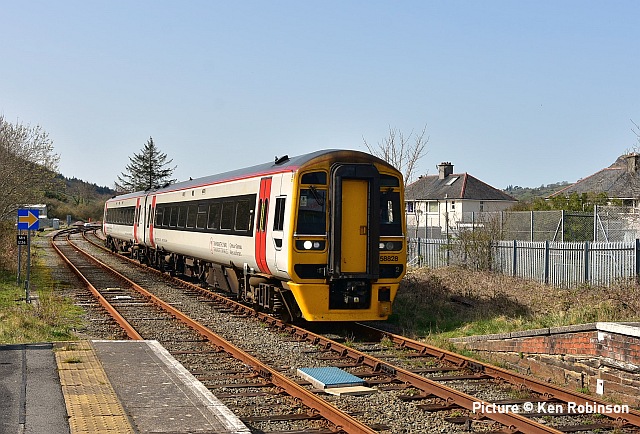
158 828 entering Porthmadog shortly afterwards with the 13:38 Pwllheli-Machynlleth (Ken Robinson).
From Dave Sallery's archive
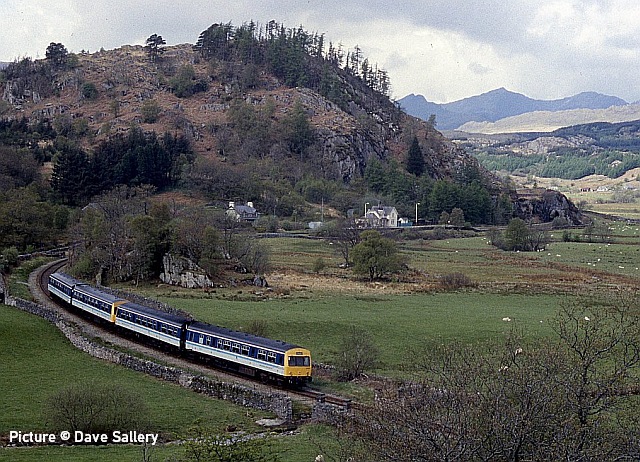
On 12 May 1993, a pair of smart-looking Class 101s has just passed Roman Bridge station (seen in the background) heading for Llandudno Junction.
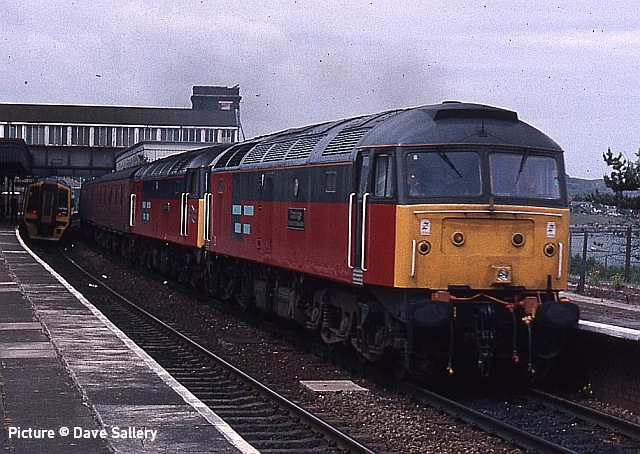
47 736 Cambridge Traction and Rolling Stock Depot and 47 565 Responsive Up test train at Colwyn Bay, 7 June 1994. Noth of these locos have since been converted to the proverbial 'razor blades.'
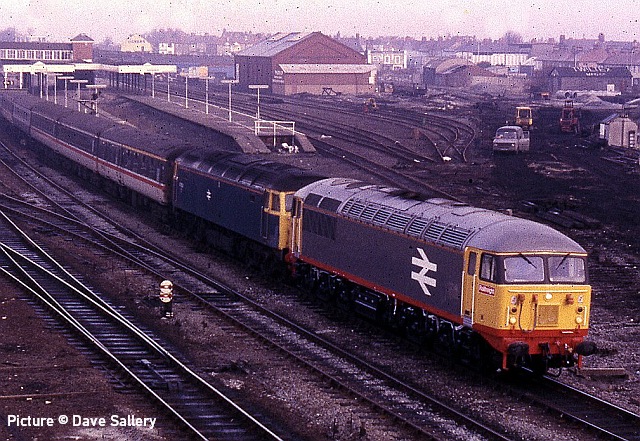
Rhyl on 8 January 1987: 56 107 passes on test after overhul at Crewe Works. Rhyl goods yard in the process of being removed, to be replaced by a supemarket.
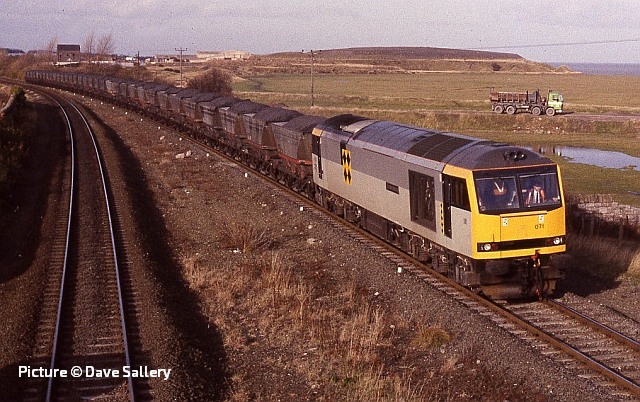
60 071 Dorothy Garrod working a loaded Merry-Go-Round from Point of Ayr colliery to Fiddlers Ferry. Dorothy Garrod was an archaeologist, the first female professor at Cambridge University.
More trouble with trespassers - report by Graham Breakwell
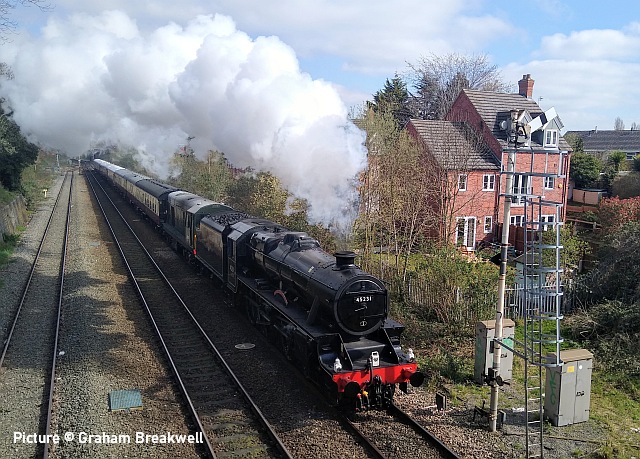
Locomotive Services Ltd ran a Chairman’s private charter on Good Friday 2 April, over the full length of the Central Wales line from Crewe to Carmarthen, led by 45231 Sherwood Forester with Class 20 D8107 tucked inside and recently-converted 'Observation Saloon' 6705 (seen below) on the rear. I photographed the train passing Montague Place bridge in Shrewsbury.
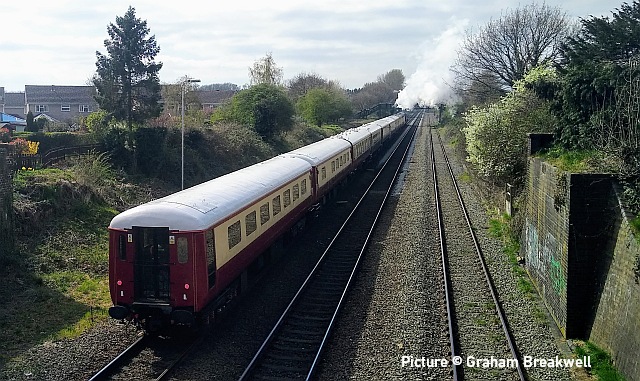
Unfortunately, on the approach to Llandeilo , trespassers on the line (two people in the four-foot with their backs to the oncoming train, according to reports) caused the driver to make an emergency stop resulting in wheel flats; 45231 limped on to Llandeilo where it was removed along with its service coach. D8107 took over and (454 minutes later!) worked solo to Carmarthen arriving there after 1 o’clock the next morning!
D8107 took the train as far as Newport on Saturday afternoon where 37 667 and 37 688, sent down from Crewe the night before, took over. The 20 returned to Crewe and the 37’s continued to Bristol East Depot for the night and on to Penzance on Sunday.
North Wales Coast home page | Archive | Previous Notice Board